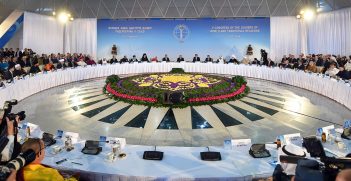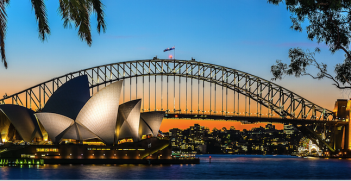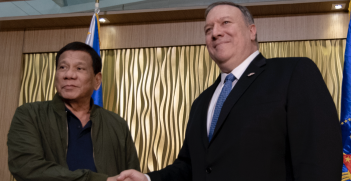Where to Now for Syria?

The recent breakdown of the cessation of hostilities in Syria has potentially ushered in a new and even darker phase of the Syrian civil war. While it may prove foolhardy to make predictions about what will happen in Syria, the necessity of finding a political resolution for the battered country requires some much-needed foresight. Three potential scenarios that may help pave the way towards such a resolution are outlined.
Another externally imposed ceasefire
Over the last few weeks, the cessation of hostilities (CoH) in Syria has looked increasingly unstable. While there have been numerous attacks on rebel-held areas during the past two months, in recent days the frequency of airstrikes (both regime and Russian) has increased dramatically.
The CoH was, for all intents and purposes, imposed by Russia and the US on the other parties to the conflict; it was nominally self-enforced. Violations were reported to US authorities via a telephone hotline, WhatsApp or email in what was a rather lax reporting mechanism with many of its own issues. While numerous analysts thought that the exclusion of Jabhat al-Nusra in the CoH would be its downfall, the overall looseness of the agreement appears to have meant that when it better served the interests of a party to break it, they’ve done so.
Nevertheless, the fact that the CoH lasted as long as it has says something about what can be achieved by the major players if their interests align. Herein lies a potential avenue for action. As the war wears on, the al-Assad regime appears to be increasingly reliant on its international and regional backers—Russia, Hezbollah and the Iranian Republican Guards—for economic and military support. There’s also an increasing realisation by the US and Russia that bombing ISIS is only exacerbating the jihadi threat they’re attempting to eradicate. Those disparities, coupled with the relative, albeit limited, success of the first countrywide ceasefire, could be exploited by savvy politicians and policymakers to create a new CoH that combines mutual interests.
Imposing a no-fly zone in southern Syria
After the intervention in Libya, the international community hasn’t shown much appetite for a no-fly zone in Syria. However, somehow alleviating the aerial bombardment of rebel-held parts of southern Syria may be a way to create a viable alternative to regime control in the form of rebel governance that has, and could further, spring up in the south.
The southern governorates of Dara’a, al-Qunaitra and as-Sweida are arguably the best places to first attempt a form of humanitarian corridor or no fly-zone. The group that controls much of the area, the Southern Front, is relatively coherent, has deep links with local communities and is purportedly more secular than its Western compatriots. These three governorates also directly border Jordan, which has made their cooperation and coordination with the US and Saudi-backed Military Operations Centre, located just outside Amman, relatively effective. That existing support could potentially be expanded to encompass the establishment of a no-fly zone via a number of means including a US, Jordanian or Arab imposed or supported no-fly zone; economic or diplomatic incentives to stop Russia and/or the regime from bombing the area; and/or potentially some sort of limited and well-surveilled surface to air missile program, the murky history of those in Afghanistan notwithstanding.
As Nicholas Heras notes, so far, the al-Assad regime seems to have deliberately destabilised rebel-controlled areas so that governance structures, which could be seen as a competitor to the state, have not had the chance to emerge. That’s because, “In the event of any grand bargain struck over Syria, the negotiating power of the Assad-led statelet would likely be enhanced by the destablisation of rebel-controlled areas and struggles by the opposition to create a successor state.” While alleviating the terror for civilians caused by constant aerial bombing, a no-fly zone could also boost the negotiating power of the Syrian opposition.
Extension or reconfiguration of local truces
Since the early days of the uprising, siege and starvation have been used by the al-Assad regime as a weapon of war. Local truces were originally envisaged to offer access to food and medical supplies in areas besieged by the regime in exchange for security arrangements. Unfortunately, the majority of local truces have a relatively dim history in Syria, but perhaps the idea can be reconfigured and strengthened to allow local truces to play a role in supporting larger, political efforts to end the violence.
That will require the terms of any future agreements to be more specific and preferably in writing, adequate monitoring mechanisms to be put in place and some leverage to coerce signatories into meeting their obligations. As the recent failed effort to provide even the most basic aid to besieged Daraya shows, agreements must be made more transparent and robust if there’s any chance of them being successful initially or part of any larger political effort.
The way forward
Six years of unimaginable violence necessitates that analysts think outside the box for solutions to the Syrian crisis. Over this time the al-Assad regime has proven itself an incredibly stubborn interlocutor and shown that it won’t change course easily, if at all. However, mounting economic losses combine with the growing realisation that the bombing of ISIS targets by the US and Russia is counter-intuitive to their own security interests, only increasing the strength of jihadi groups. While all players to this conflict are rightly concerned about regime collapse, finding a way of retreating from cycles of violence so life can continue on the ground or a political solution be negotiated abroad is more vital now than ever.
Marika Sosnowski is a Middle East researcher. She has taught the history and politics of the region at a number of universities and is a regular commentator on Melbourne radio station Triple R. This article originally appeared on ASPI’s The Strategist on 17 June. It is republished with permission.





